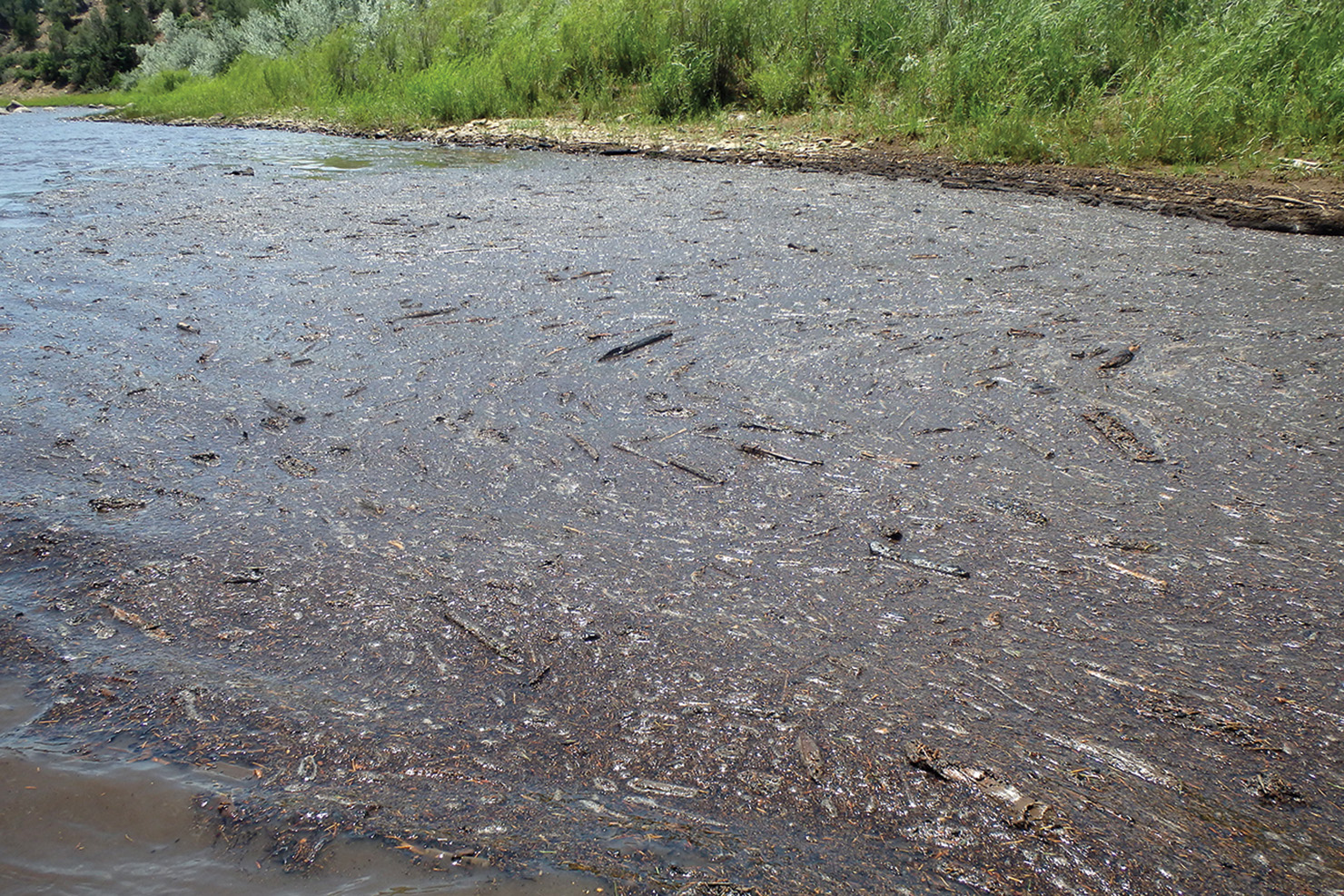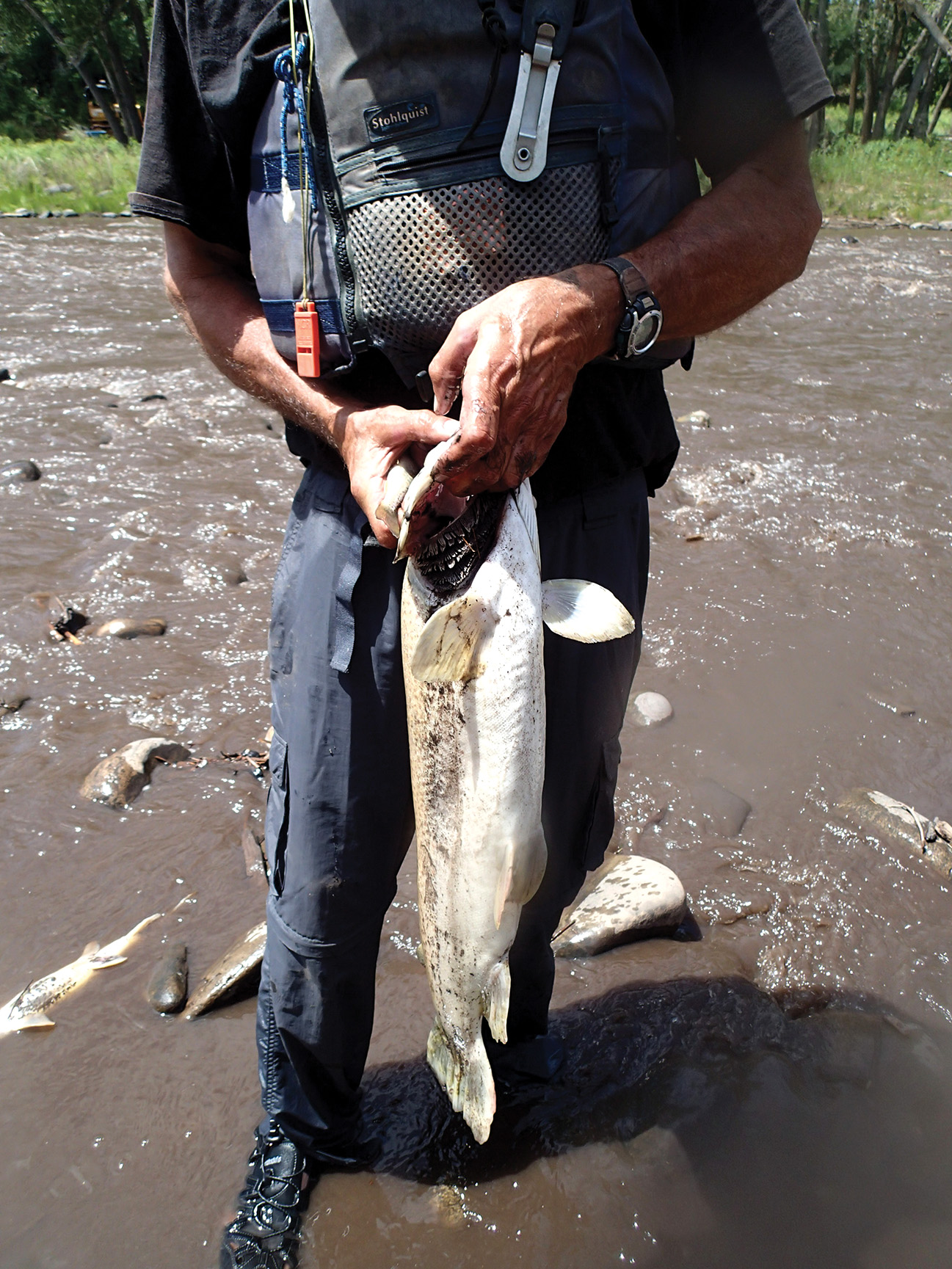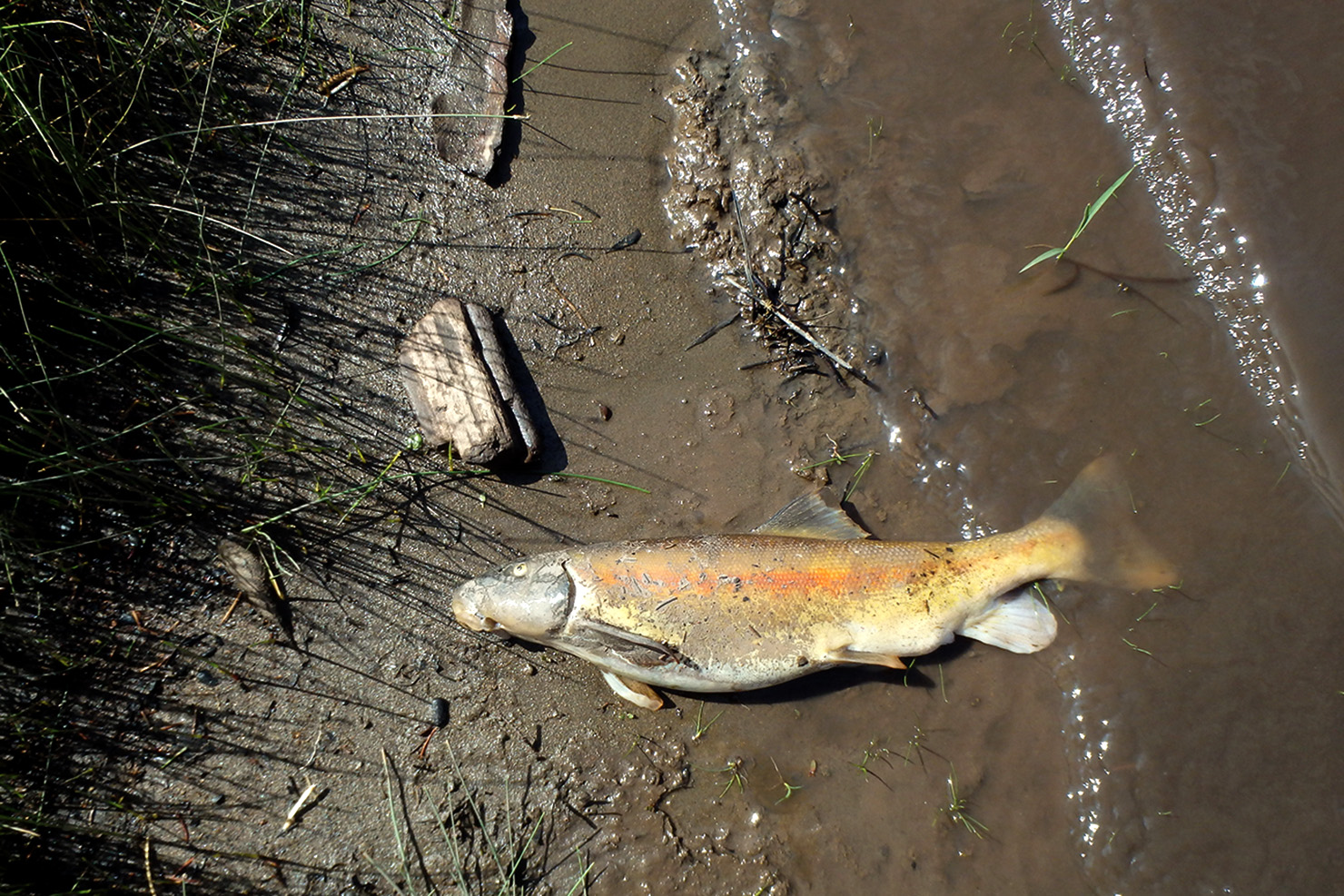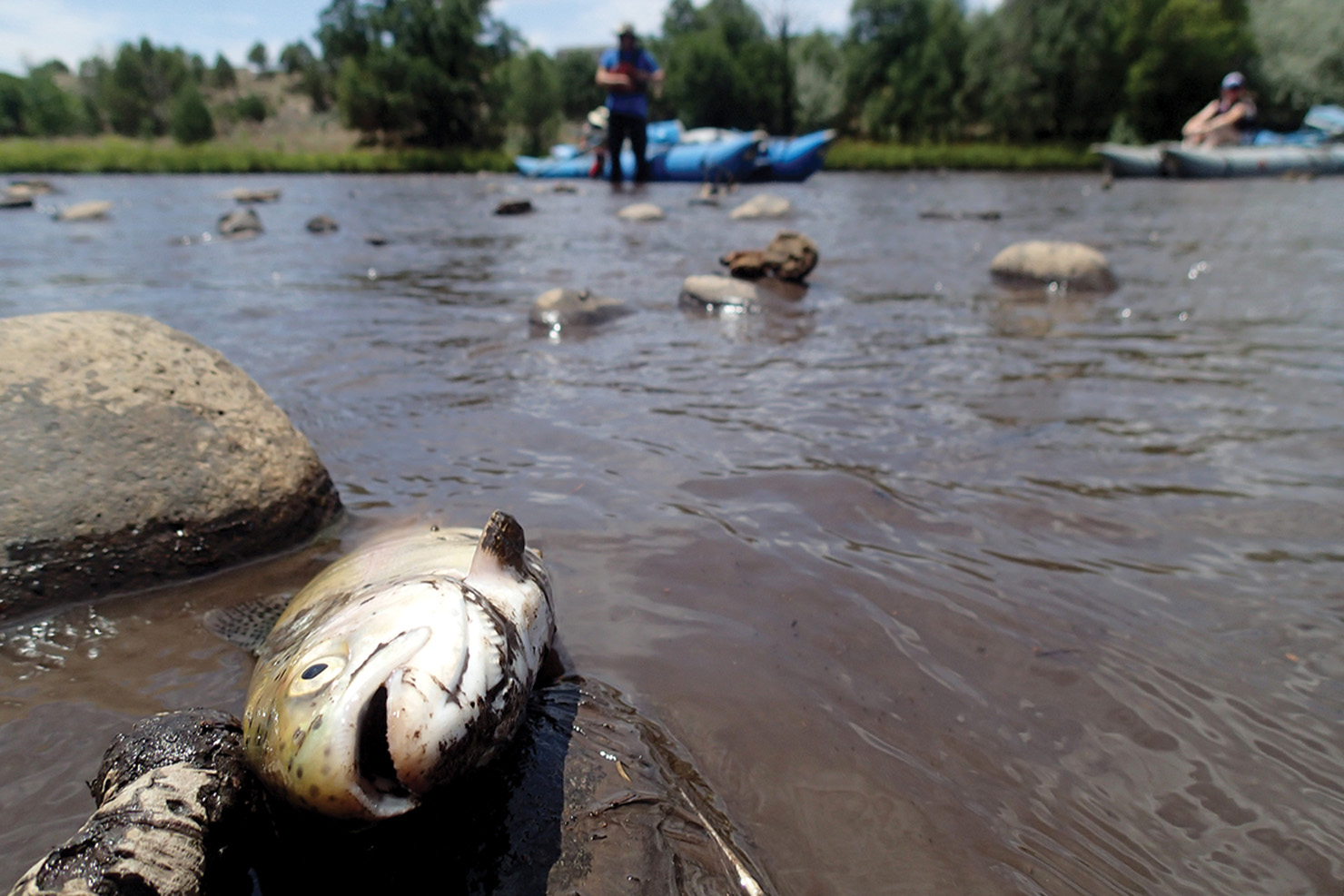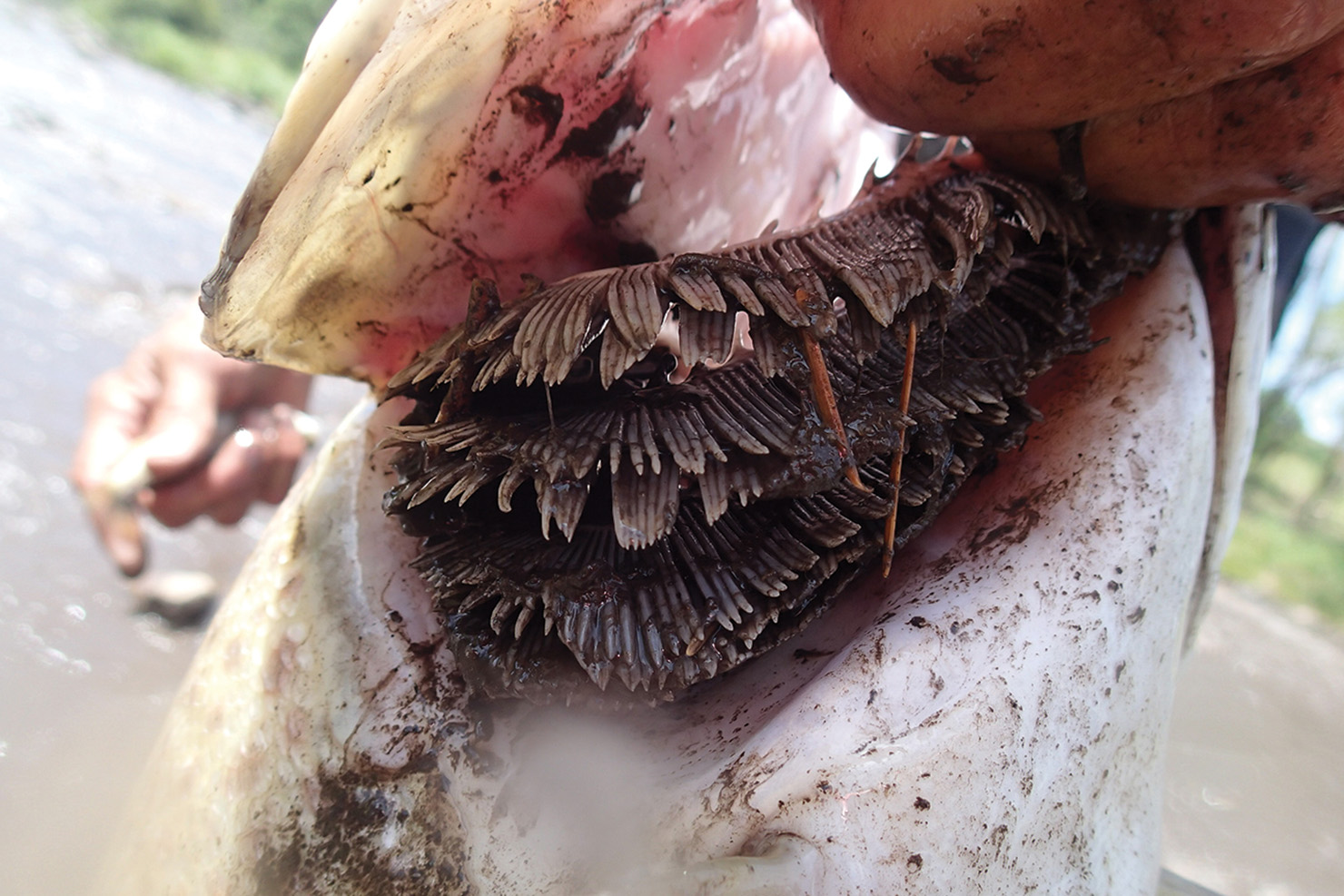A heavy mixture of ash, debris and sediment contaminated the Animas River in the wake of the 416 Fire, attributing to significant degradation of water quality, resulting in mass die-offs for fish populations as far south as the Southern Ute Reservation.
“My belief is that we had some initial rains that caused concern about runoff from the burn area, however, one to two weeks later there was a much more significant rain event over the Hermosa drainage,” Southern Ute Wildlife Division Head Steve Whiteman said. “We are not talking about a toxicity in the water, such as dissolved metals from past mining. This is suspended ash and sediment washing down from the burn area that is clogging the gills of fish and interfering with their respiration — causing a very significant die off. It’s going to take time for the ash and sediment to work its way through the system, and for the fisheries to recover.”
The runoff has impacted the Animas River from Hermosa Creek down to the New Mexico State line, and large sections of the Southern Ute Reservation. The Tribe’s Environmental Programs Division (EPD), Water Quality Program, and Fisheries Program, under the Southern Ute Wildlife Division, are directly involved in assessing the ecological impacts.
EPD and Wildlife joined together to float the river on Thursday, July 19, to make a visual assessment. Primarily the two departments are sharing observations at this time, EPD taking a more active role in water sampling, and the collection of water chemistry data. Once the conditions improve, Fisheries will do a fish survey to get a more accurate picture, said Wildlife Technician Jon Broholm, “to see what we are able to catch, and get an idea of what species, sizes, and numbers survived — possibly later this year or early next year.”
“It is going to take us time to evaluate that,” Whiteman said. “Some species, such as native suckers, are more resilient than others, while trout populations are much more sensitive to water quality conditions. We believe we’ve lost most of both groups in the Animas.” The good news is that other local fisheries are unaffected by the 416 Fire, and reintroduction of trout into the Animas River can begin once the river is hospitable. “We can replace trout using fish produced in hatcheries, but we can’t do that quite as easily with native fish species,” he cautioned. “Hopefully enough native fish will survive that they can quickly re-populate on their own.”
Low water was a factor, the river was running between 200-300 CFS at the time of initial runoff, resulting in very little dilution and intensifying the impact of the ash runoff from the Hermosa Creek drainage, west of Highway 550. The entire burn area drains into the Animas in one way or another, explained Broholm.
Southern Ute Water Quality will be able to quantify data, based on measurements immediately ahead of the runoff event, against post runoff and historical data — to asses impacts to the river system. The Tribe will continue to monitor these impacts as the monsoon progresses. “Sediment, ash and nutrients are the primary concern, explained Southern Ute Water Quality Program Manager, Curtis Hartenstine. Nutrients derived from different sources, including fire retardant that was intended to encourage regrowth in the burn scar, washed into the river — we also anticipate a spike in metals, such as iron.”
Impact, extends beyond fish, to the macroinvertebrate (insects) which are the basis for the food chain sustaining aquatic life. The good news is that the insect populations will rebound relatively quickly. “The water quality data the Tribe collects is shared with state water quality authorities, helping us all to understand the impacts from the fire and improving restoration efforts going forward,” Hartenstine said.
From a state agency standpoint, Colorado Parks and Wildlife and New Mexico Game and Fish are probably the most concerned. “This is far more impactful to aquatic life in the river than the Gold King mine spill in 2015. There’s really no comparison in terms of fish loss.” Whiteman emphasized.
“And, unfortunately, there is really nothing we can do at this time to stop this, or save the fish,” Whiteman continued, “what we have to do is look to the future, and the gradual re-building of the fisheries.”
From an economic standpoint, the 416 Fire has had a huge impact on regional tourism already. The fish die-off will certainly deal a blow to the fishing industry, the Animas River is highly regarded as one of the top trout fishing rivers in the Four Corners region.

